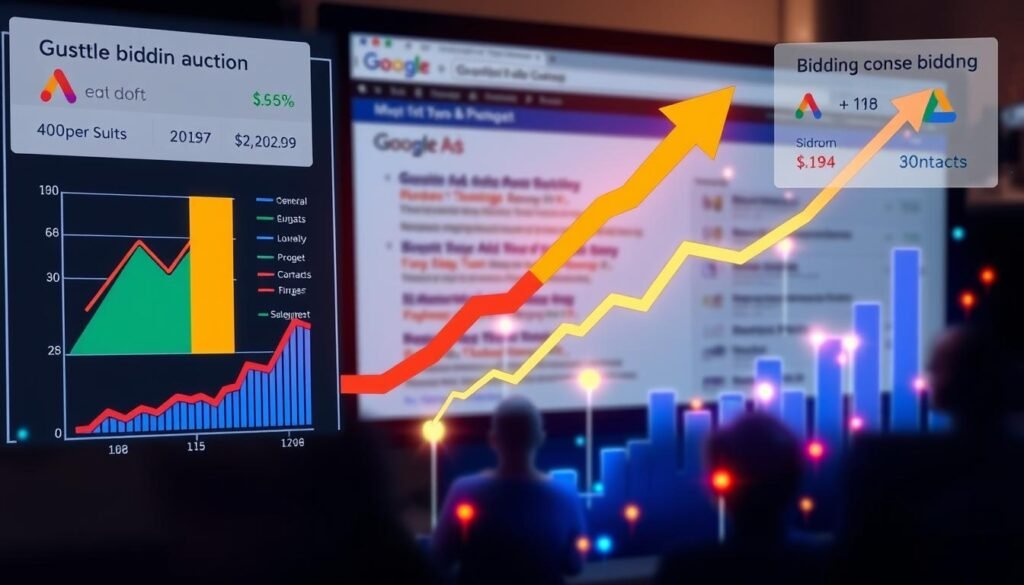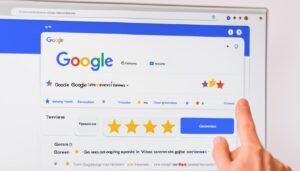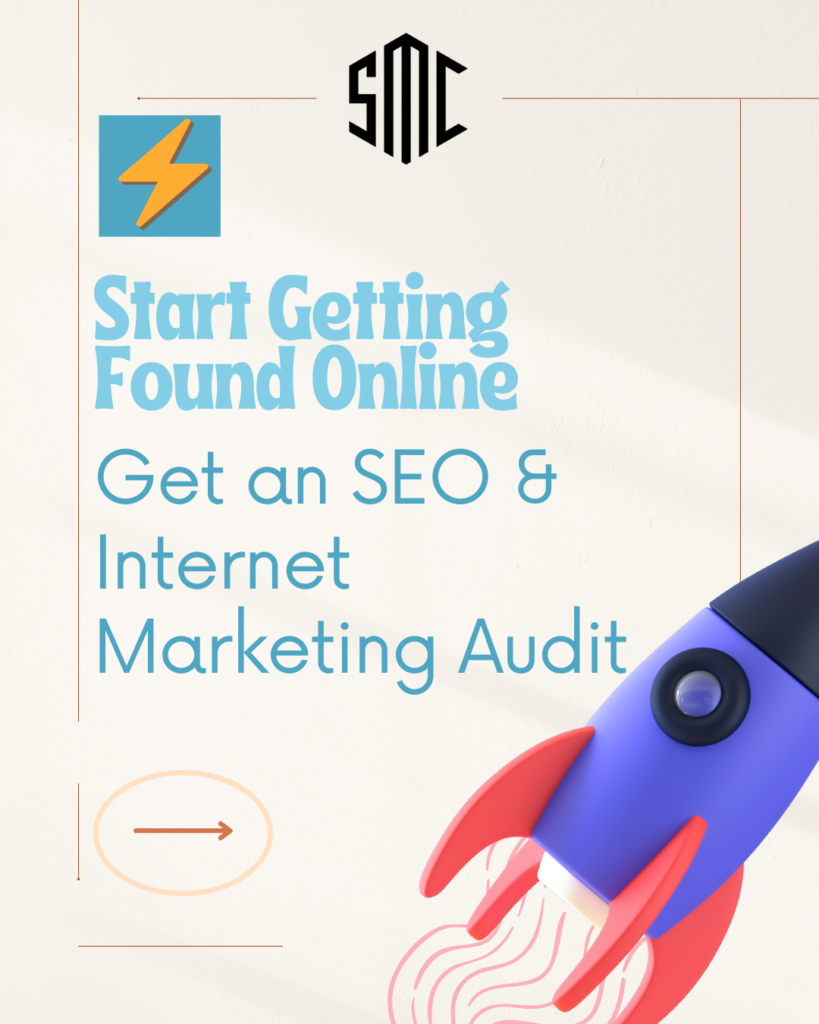Google handles over 8.5 billion searches every day. So, it’s likely your potential customers have seen Google Ads before1. Using Google Ads can help drive more traffic to your business. It can also increase website visits, inquiries, and in-store visits. But, making effective Google Search Ads takes careful planning and optimization. This guide will teach you key strategies and best practices to make Google Search Ads work for your business.
Key Takeaways
- Google Ads has been a paid advertising platform for nearly two decades, establishing it as a staple in digital marketing strategies1.
- Advertisers who improve Ad Strength for their responsive search ads from ‘Poor’ to ‘Excellent’ see 12% more conversions on average2.
- Including the word “free” in ad copy can significantly boost click-through rates (CTR)3.
- Integrating search terms into ad copy enhances relevance and Google Ad scores, impacting cost and return on investment3.
- Utilizing audience data and Target ROAS Smart Bidding can lead to a 2.5x return on ad spend and a 5% improvement in clickthrough rate2.
Understanding Google Ads
Google Ads is a key PPC advertising platform. It lets businesses reach millions of potential customers with targeted ads online. By using Google’s search engine, advertisers can make and improve ad campaigns. This helps drive website traffic, get leads, and increase sales4.
What are Google Ads?
Google Ads used to be called Google AdWords. It’s a digital ad solution that lets businesses show ads on Google’s search engine, YouTube, and more. Advertisers can pick specific keywords, audiences, and places to show their ads to the right people5.
Benefits of Advertising on Google
Google Ads has many benefits for businesses. It connects with millions of daily searches, helping advertisers reach a huge audience looking for products or services5. It also has advanced targeting, so businesses can focus on specific groups, interests, and behaviors. This means they’re more likely to reach their ideal customers5.
Google Ads can also help businesses beat organic search results and competitors. This means their products are more likely to be seen first on search engines5.
The Conversions column in Google Ads tracks important customer actions, like buying online, downloading apps, making phone calls, or signing up for newsletters4. The search terms report also gives insights on what keywords trigger ads. This helps advertisers pick better keywords and improve their ads4.
Google Ads is a strong tool for businesses of all sizes. It helps them reach and connect with their target audience, track their ad success, and grow their business5.
Setting Up An Effective Google Search Ads Campaign
Before starting a Google Ads campaign, it’s key to set clear advertising goals6. Choose the campaign type that fits your goals. Whether you want more website visitors, leads, or in-store visits, knowing the Google Ads options helps you decide. Setting up Google Ads is easier than you think, but it needs a strategic plan to get the most out of it.
Defining Your Advertising Goals
Start by setting clear advertising goals6. What do you want to achieve? Do you aim to boost brand awareness, drive more website traffic, get leads, or promote certain products? Google Ads has many objectives, like sales, leads, traffic, and more6. Knowing your goals helps pick the best campaign type and tailor your ads for success.
Selecting the Right Campaign Type
After setting your goals, pick the right Google Ads campaign type. You can choose from search campaigns, display campaigns, video campaigns, and others6. Each type targets different goals and audiences, so it’s vital to match your strategy with the right one. Search campaigns are great for reaching people looking for your products, while display campaigns help build brand awareness.

Creating a successful Google Ads campaign means understanding your goals and the campaign types available. By matching your objectives with the right campaign settings, you can boost your Google Ads results and help your business grow6.
Crafting Compelling Ad Copy
Great Google Ads start with ad copy that talks directly to your audience. It’s key to use real, relevant language that connects with potential customers. Your ad should match your brand and clearly share the main benefits and what makes your products or services special.
Writing Genuine and Relevant Ad Text
To grab your audience’s attention, understand their problems, what they’re searching for, and what they want to achieve. Use keywords in your ad copy to match their searches7. Google’s data shows that ads with a higher Ad Strength see a 12% boost in conversions8. Keywords help guide searchers to the right spot.
Reflecting Your Brand and Offerings
Your ad should show off your brand and clearly share what you offer7. Swoop, a Canadian airline, boosted revenue by 71% and conversions by 61% with responsive search ads9. Showcasing what makes you different can help you stand out and get people to act. Adding ad assets like site link and callout extensions can make your ad more visible and appealing.
By making your ad copy genuine, relevant, and true to your brand, you can boost your Google Ads performance and bring in more quality traffic to your site9. The key is to write ad copy that motivates users to take action.
Keyword Research and Targeting
Starting a successful google ads campaign means doing great keyword research. Keywords help your ads get seen by potential customers. 1 It’s key to know the right keywords and negative keywords for good online visibility and growth. 1
The Google Ads Keyword Planner is a great tool for finding keywords. Just enter topics or phrases to get a list of keyword ideas for your campaigns. 2 Make sure to understand the intent behind each keyword to show your ads to the right people. 2
Understanding Keywords and Negative Keywords
Not all keywords are the same. Some might have lots of searches but are too hard to win, costing too much. 1 Others might not get searched much, making it hard to find new customers. 1 That’s why looking at keyword details like cost-per-click, competition, and site authority is important. 1
Using Keyword Match Types
There are different ways to match keywords. Exact match, phrase match, and broad match can change where your ads show up and how they match searches. 3 Using a mix of these match types can help you target well and reach more people. 3
Don’t overlook negative keywords either. These help stop your ads from showing up for searches that aren’t relevant, making your campaign better. 3 Keeping an eye on your negative keywords list helps your ads reach the right people. 3

Great google ads campaigns start with good keyword research and smart keyword targeting. Using the Google Ads Keyword Planner and knowing about keyword match types and negative keywords can make your ads more effective. 123101112
Effective Google Search Ads
Crafting effective google search ads best practices means planning carefully. It’s key to know who you’re talking to. This helps make ads that really speak to their needs and interests. Use the right keywords to make sure your ads reach the right people at the right time13.
Adding ad extensions and different types of assets can boost your Google Search Ads14. Always test and tweak your ads to make them work better. This way, you can get better results for your business13.
Search ad optimization is a constant effort. Keep up with new tips and data to improve your strategy and beat the competition1314.
With a strategic plan and a focus on getting better, you can make google search ads best practices that really connect with your audience. This leads to meaningful outcomes for your business1314.
Ad Extensions and Asset Types
Google Ads keeps growing its options for advertisers with new ad extensions and asset types15. Over time, the number of Google Ads assets has grown15. Some extensions help users find what they need on websites15. Ad extensions help both advertisers and users15. Big ads with more assets get more visibility on search results15. Extensions also help filter out bad leads, making leads better15. Plus, they can lower the cost per click and help manage your ad budget better15.
Utilizing Ad Extensions
You can add Google Ads extensions at different levels like ad group, campaign, or account15. Since 2022, you can control ads’ look at the account level15. Extensions like location, call, sitelink, and more help with different tasks15. They give location info, encourage calls, link to pages, highlight selling points, and more15.
Incorporating Various Asset Types
Google Ads also has many asset types to make your search ads better16. With responsive search ads, you can use up to 15 headlines and 4 descriptions16. Image ads make your ads more eye-catching17. Using these assets can boost clicks and conversions by meeting user needs15. Adding several asset types can help you reach your ad goals16.

Using Google Ads’ many ad extensions and asset types can make your ads more powerful17. This can lead to more visibility, engagement, and better campaign results15.
Bidding Strategies and Budget Management
Understanding google ads bidding strategies is key to making your ads work better and save money. You can choose from cost-per-click (CPC), cost-per-impression (CPM), and cost-per-engagement (CPE). The right strategy can greatly improve your campaign’s success. Google’s research18 shows that smart bidding can cut CPC by up to 34%, reduce cost-per-conversion by up to 33%, and increase conversions by up to 54%.
Choosing the Right Bidding Strategy
When setting up your Google Ads, think about the different bidding strategies you can use. These strategies19 range from manual cost-per-click (CPC) bidding to automated and smart bidding options. Each has its own benefits depending on what you want to achieve. For example, manual CPC lets you control your bids, while automated strategies like Target CPA and Target ROAS use Google’s algorithms for better performance19.
Choosing the right google ads bidding strategies and managing your budget well can greatly improve your campaign. This can lead to better conversion rates, return on investment, and overall efficiency.

To boost your Google Ads, try A/B testing with Google’s Draft & Experiments feature. Look at ad performance18 and adjust based on data. Be patient and make decisions with a 95% confidence level. With the right bidding strategies and budget management, you can make the most of your Google Ads. This can help you reach your goals, like increasing conversion rate by 20%, boosting ROAS by 15%, or decreasing CPA by 45%1819.
Tracking and Optimizing Campaigns
Keeping an eye on your google ads campaign tracking is key for top results. Watch important metrics like click-through rate (CTR), conversion rate (CVR), and return on ad spend (ROAS). This helps spot where you can do better20. Make sure to tweak your Google Ads account at least once a month. Adjustments can be made daily or weekly to catch up with trends and stay efficient with your budget20.
Monitoring Campaign Performance
Check your campaign’s performance often. Look at impressions, clicks, CTR, phone calls, and conversions21. This info shows what ads work well and where you can get better21.
Testing and Iterating Ad Creative
Keep testing and changing your ad creative to find the best parts. Try out different headlines, descriptions, and images to see what clicks with your audience20. This ad testing helps you improve your ad creative iteration over time, making your campaigns work better20.
By tracking your campaign closely and making smart changes, you can boost your Google Search Ads results. This leads to a better return on your marketing investment.
Advanced Targeting Techniques
As a digital marketer, you know broad keywords don’t cut it anymore. Google Ads offers advanced targeting to help you reach your ideal customers precisely22.
Location Targeting
Google Ads lets you target specific areas like cities, states, or a radius around a location. This way, you can focus your ads on where your audience lives. It ensures your message gets to the right people22.
Audience Targeting
Google Ads also targets users by their interests, behaviors, and past interactions with your business22. You can target specific ages, genders, incomes, or family types22. Demographics let you reach certain groups. In-market audiences target those researching or thinking about products like yours22. Custom intent audiences focus on users’ search histories and online actions22.
Remarketing helps you reach users who’ve visited your site or app before22. Customer match lets you use your own customer data for more targeted ads22.
By combining these techniques, you can make your ads more relevant and reach valuable customers better22. Testing different ad styles helps you find what works best for your audience22.
Google Analytics gives you insights into how users behave, helping you tailor ads for a better experience22. Google Ads’ attribution reports show how campaigns perform and where they help the most, guiding better decisions22.
Learning how to target your audience well is key to great digital marketing campaigns22.
Conclusion
Making great google search ads means you need a good plan. This plan should include knowing your audience, making eye-catching ads, using the right keyword targeting, and always improving. By using the tips in this guide, you can make Google Search Ads that help your business grow. This includes getting more website visitors, more questions, and more sales23.
Google Ads lets you show ads to people searching for specific words or visiting certain websites23. You can also target ads by age, location, language, and more23. Plus, you control your budget with Google Ads. You can set limits on how much you spend each month or day, and you only pay when someone clicks on your ad23.
Always be ready to try new things and keep making your ads better. Use the tools and data from Google Ads to see how well your ads are doing. This way, you can make your ads better, set smarter bids, and target better to get even better results24. The key takeaways from this guide will help you make Google Search Ads that meet your business goals and speak to your audience.












